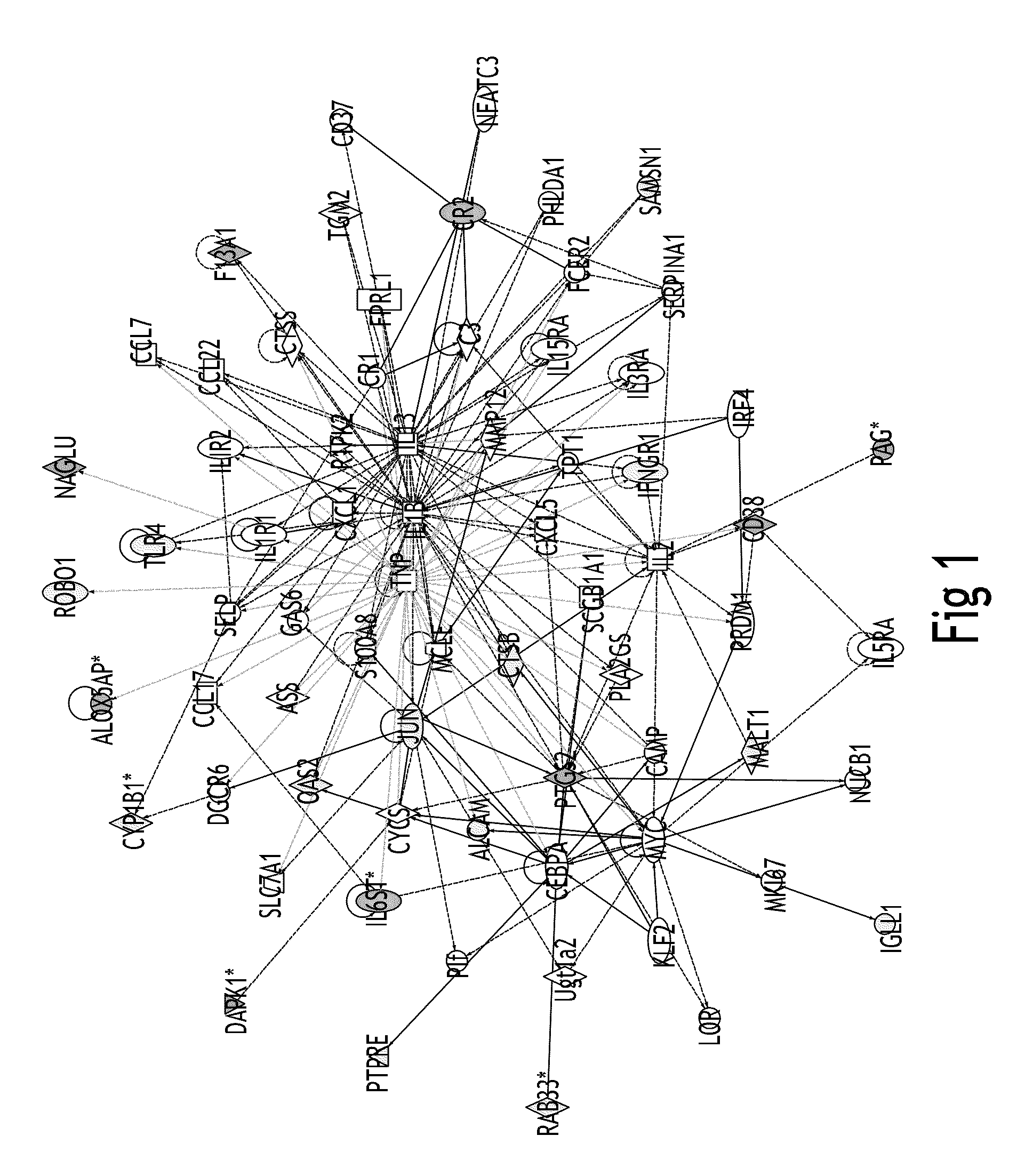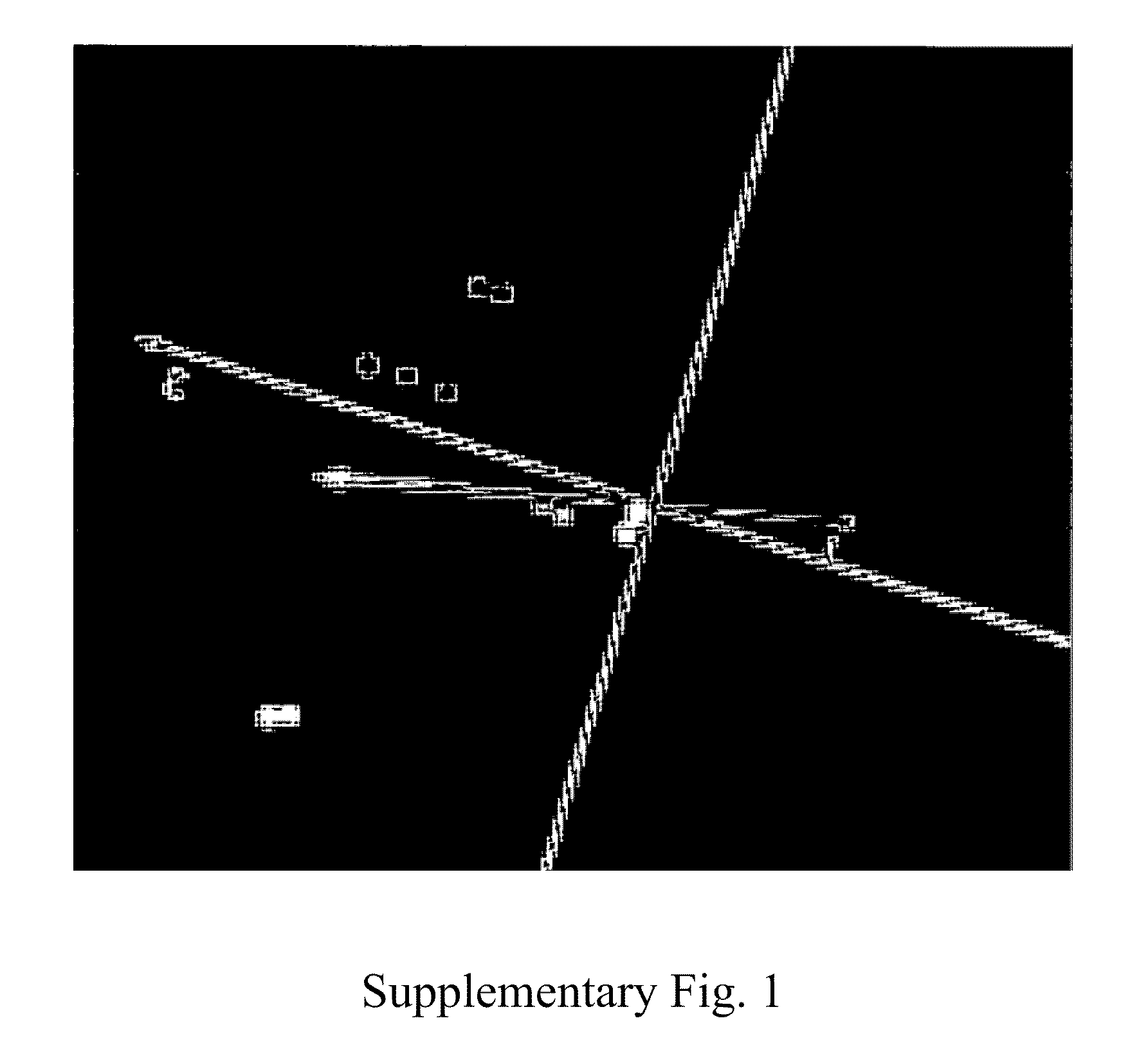Method and kit for diagnosing Autism using gene expression profiling
a gene expression and kit technology, applied in the field of dna microarray technology, can solve the problems of wasting time and resources, affecting the diagnosis of autism, and affecting the diagnosis of autism, and achieve the effect of facilitating diagnosis and treatment of autism spectrum disorders
- Summary
- Abstract
- Description
- Claims
- Application Information
AI Technical Summary
Benefits of technology
Problems solved by technology
Method used
Image
Examples
examples
Differential Gene Expression in Lymphoblastoid Cell Lines from Monozygotic Twins Discordant for Classic Autism
[0069]To determine whether LCL derived from individuals with autism exhibit patterns of gene expression that may be relevant to autism spectrum disorders (ASD), gene expression profiling was performed on LCL derived from 3 sets of male monozygotic twins, one of each pair who met standard diagnostic criteria for autism based on the ADI-R. In each case, the other twin, while not clinically autistic, exhibited autistic traits and was classified either as “broad spectrum” or “not quite autistic” according to guidelines described by the Autism Genetic Resource Exchange (AGRE) repository (http: / / www.agre.org). Two of the three twin pairs had an unaffected sibling and these were also used for comparison with their respective twin siblings. All of these assays employed an experimental design in which RNA from twin siblings were cohybridized on two-color spotted microarrays containin...
PUM
| Property | Measurement | Unit |
|---|---|---|
| Gene expression profile | aaaaa | aaaaa |
| Disorder | aaaaa | aaaaa |
| Spectrum | aaaaa | aaaaa |
Abstract
Description
Claims
Application Information
 Login to View More
Login to View More - R&D
- Intellectual Property
- Life Sciences
- Materials
- Tech Scout
- Unparalleled Data Quality
- Higher Quality Content
- 60% Fewer Hallucinations
Browse by: Latest US Patents, China's latest patents, Technical Efficacy Thesaurus, Application Domain, Technology Topic, Popular Technical Reports.
© 2025 PatSnap. All rights reserved.Legal|Privacy policy|Modern Slavery Act Transparency Statement|Sitemap|About US| Contact US: help@patsnap.com



